RESOURCES

MaresConnect Project Brochure
MaresConnect is a proposed 750MW subsea and underground electricity interconnector system linking the electricity grids in Ireland and Great Britain. You'll find more information in our Project Brochure.
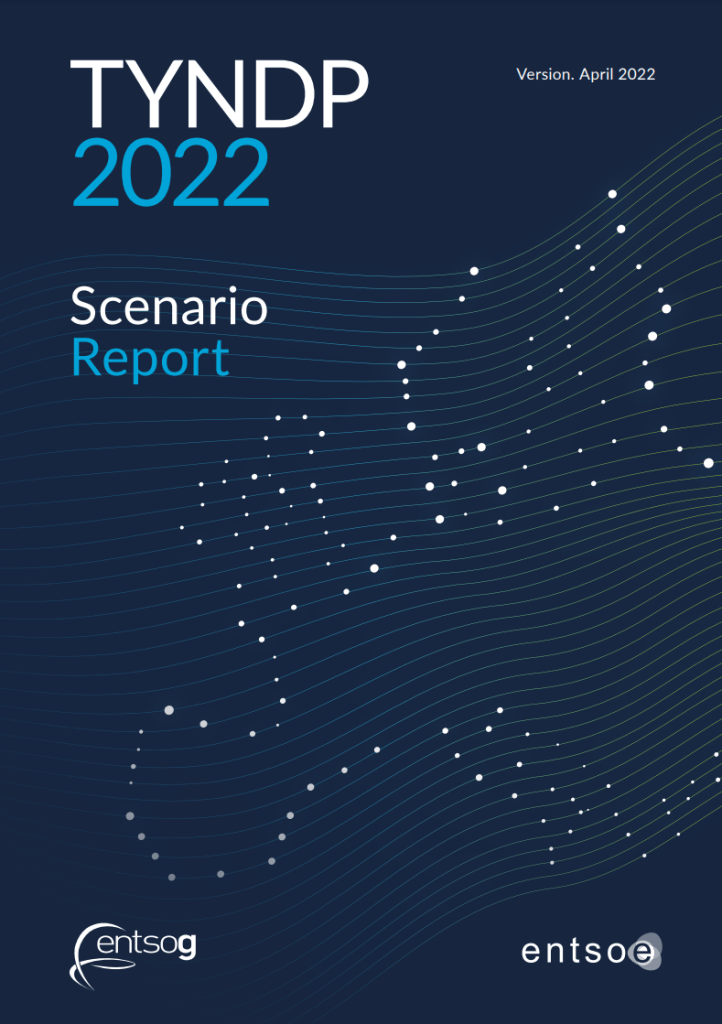
Entso-e / Entsog TYNDP 2022 Scenario Report
The development of this comprehensive, reliable and contrasted set of possible energy futures, as presented in the Scenario Report, will allow the TYNDPs to perform a sound and comprehensive assessment of European energy infrastructure requirements from a whole energy system perspective and will provide decision makers with better information, as they seek to make informed choices that will benefit all European consumers.
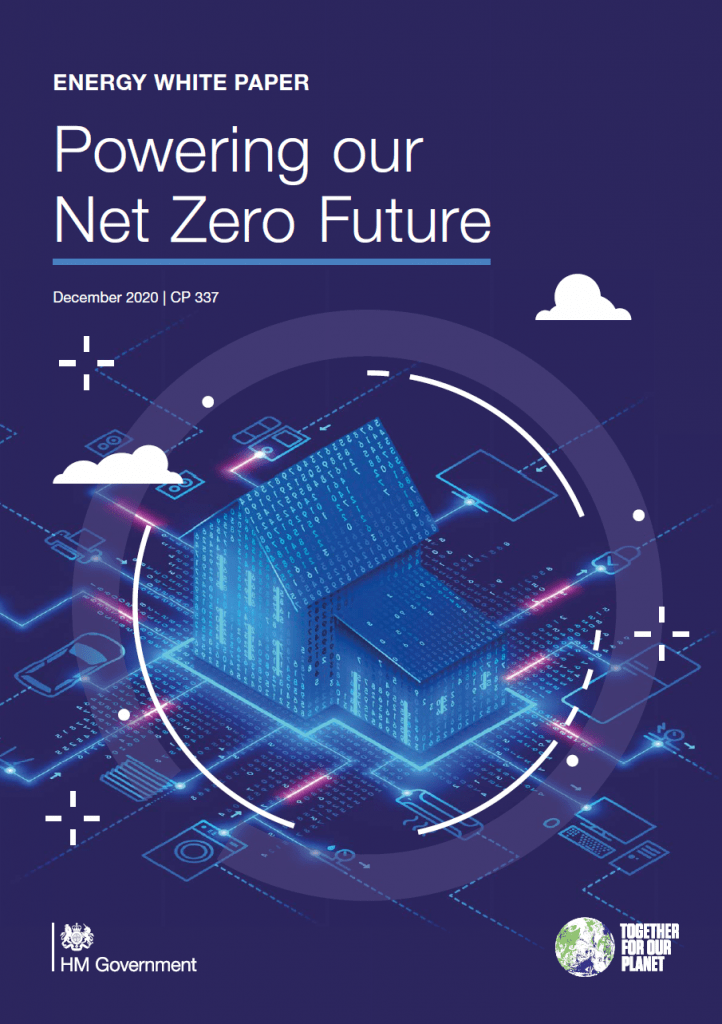
BEIS White Paper - Powering Our Net Zero Future 2020
This white paper puts net zero and our effort to fight climate change at its core, following the Prime Minister’s Ten Point Plan for a Green Industrial Revolution. The Ten Point Plan sets out how government investment will leverage billions of pounds more of private investment and support up to 250,000 jobs by 2030.
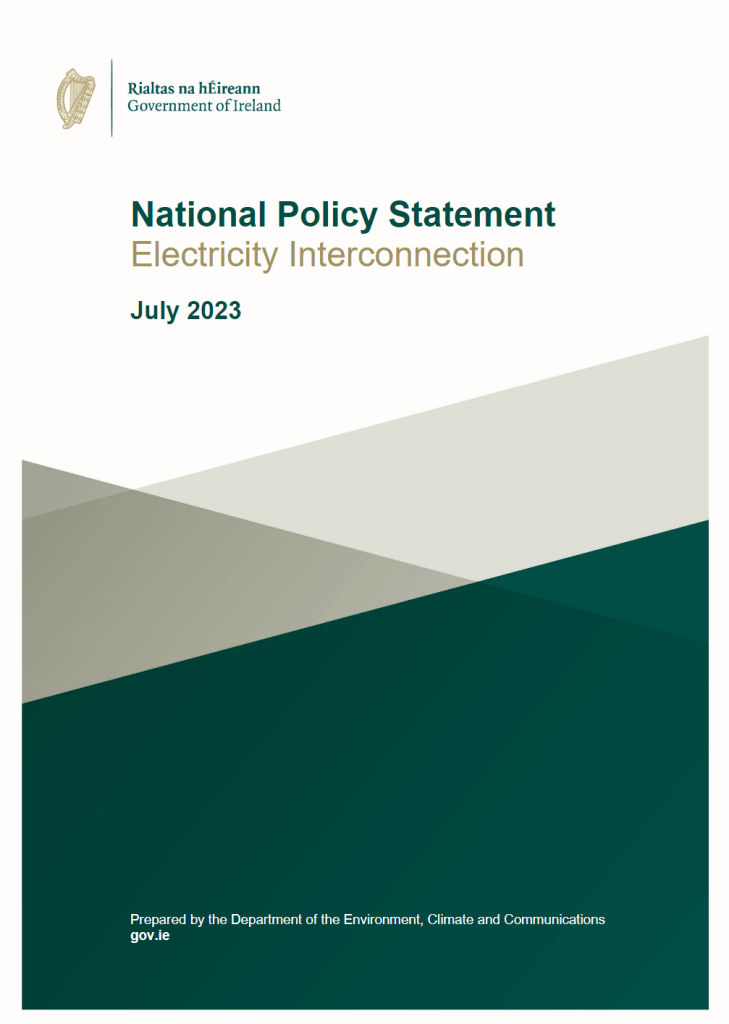
DECC National Policy Statement Electricity Interconnection - July 2023
Circumstances have changed radically since the publication of the first National Policy Statement on Electricity Interconnection in July 2018. Ireland’s plan-led offshore renewable energy ambitions have gained considerable momentum. The EU’s energy and interconnection ambitions have grown substantially. Maritime development is now guided holistically under the National Marine Planning Framework. A strengthened consenting regime is being established with the Maritime Area Regulatory Authority and a new role for An Bord Pleanála. The UK has left the European Union. The level and pace of change is unprecedented and will continue to evolve. This statement builds upon the 2021 Policy Statement on the Framework for Ireland’s Offshore Electricity Transmission System and the 2023 Policy Statement on the Framework for Phase Two Offshore Wind.
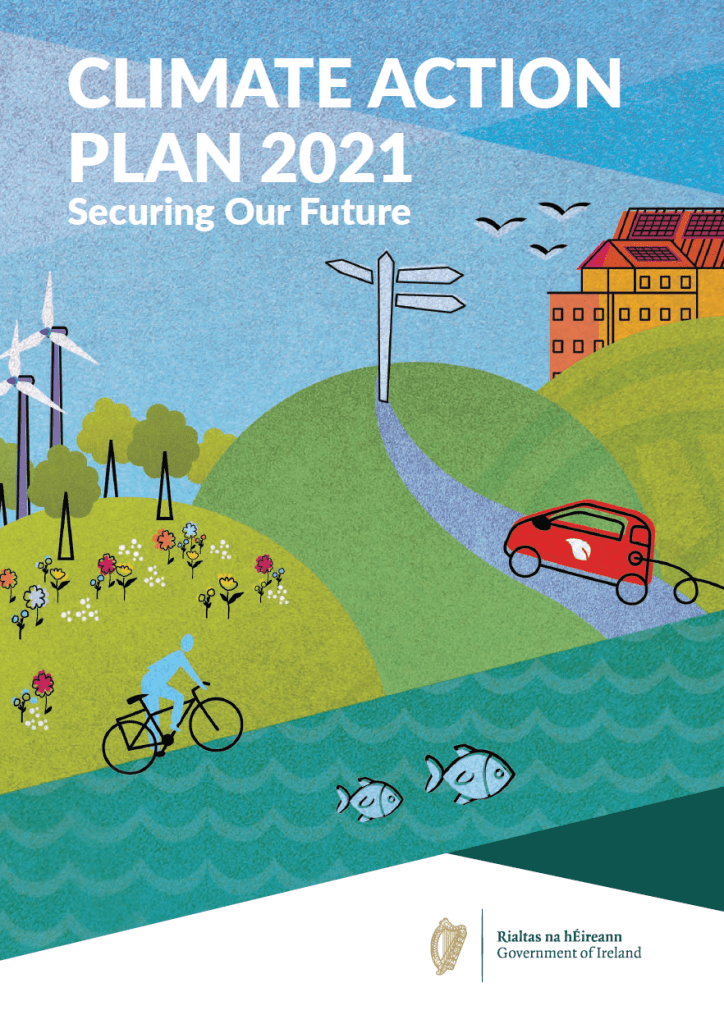
Climate Action Plan 2021 - Govt of Ireland
As the world gathers in Glasgow to tackle global warming, we are publishing the Climate Action Plan 2021. This plan sets a roadmap for taking decisive action to halve our emissions by 2030 and reach net zero no later than 2050, as we committed to in the Programme for Government. The science is indisputable and the effects of climate change are already clear. Extreme weather events are becoming more frequent with devastating consequences. Climate change is here and is already impacting our world, with risks to global security including food supplies. Ireland is also at risk of more frequent storms and flooding.
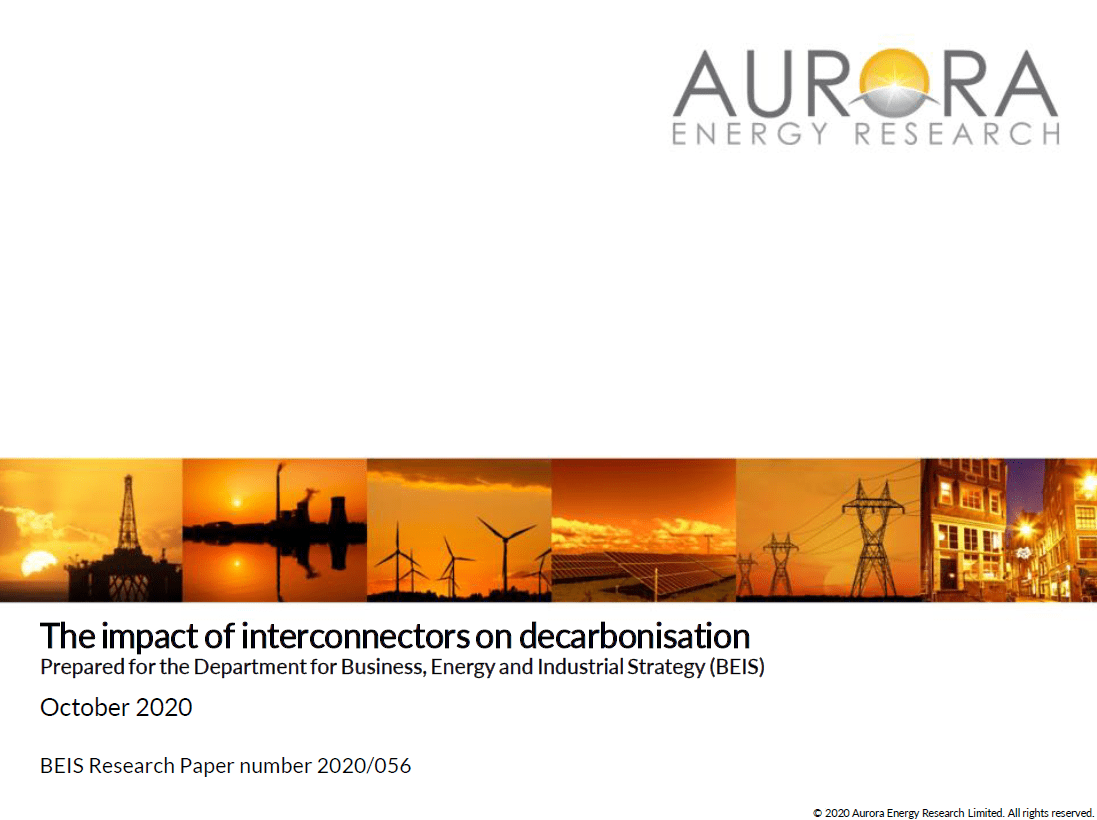
The Impact of Interconnectors On Decarbonisation - 2020 (BEIS)
This study explores the impact of interconnection and associated cross border trading on carbon emissions at a regional level, considering different levels of interconnection and different decarbonisation pathways for Europe and GB.
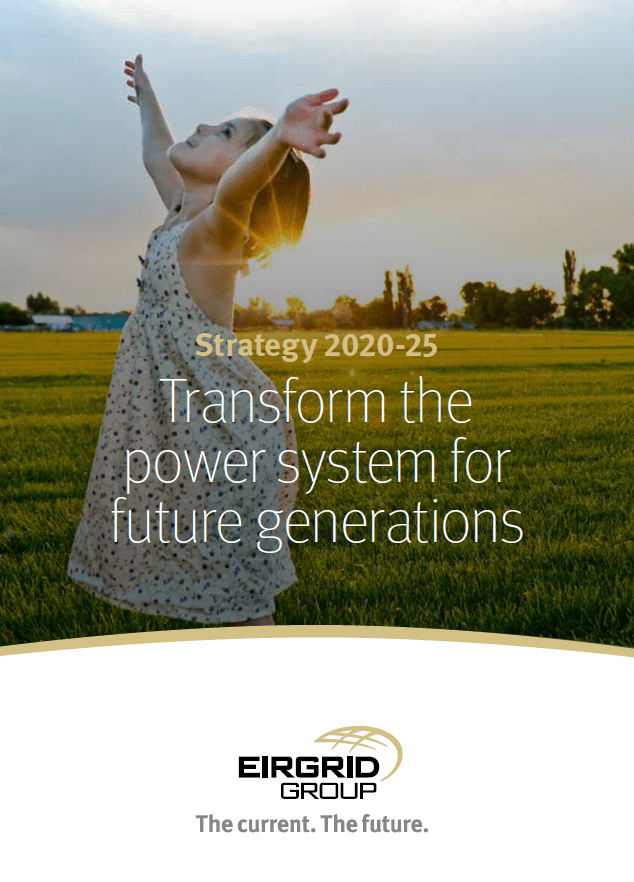
EirGrid EirGrid Strategy 2020-20205 Transform the Power System
Electricity from renewable sources will play a vital role in the global response to the climate crisis. Heating and transport are switching from carbon‑based fuels to electricity, which will increase demand for power. The expectation is that the electricity system will carry more power, and most of it will be generated from renewable sources.

EirGrid All Island Generation Capacity Statement 2020-2029
Last year saw a major milestone in the In June 2019, the Minister of Communications, Climate Action and Environment for Ireland committed to raise the amount of electricity generated from renewable sources to 70% by 2030 with no generation from peat and coal in the Climate Action Plan 2019. This ambition is needed to honour the Paris Agreement. It represents a significant change for the electricity industry and for EirGrid. It is an opportunity to create a sustainable electricity system that will meet the needs for the next generation. EirGrid awaits the publication of the Government’s National Energy and Climate Plan which is expected in 2020. The document is expected to set out further details of how the Government envisions achieving the country’s 2030 targets.
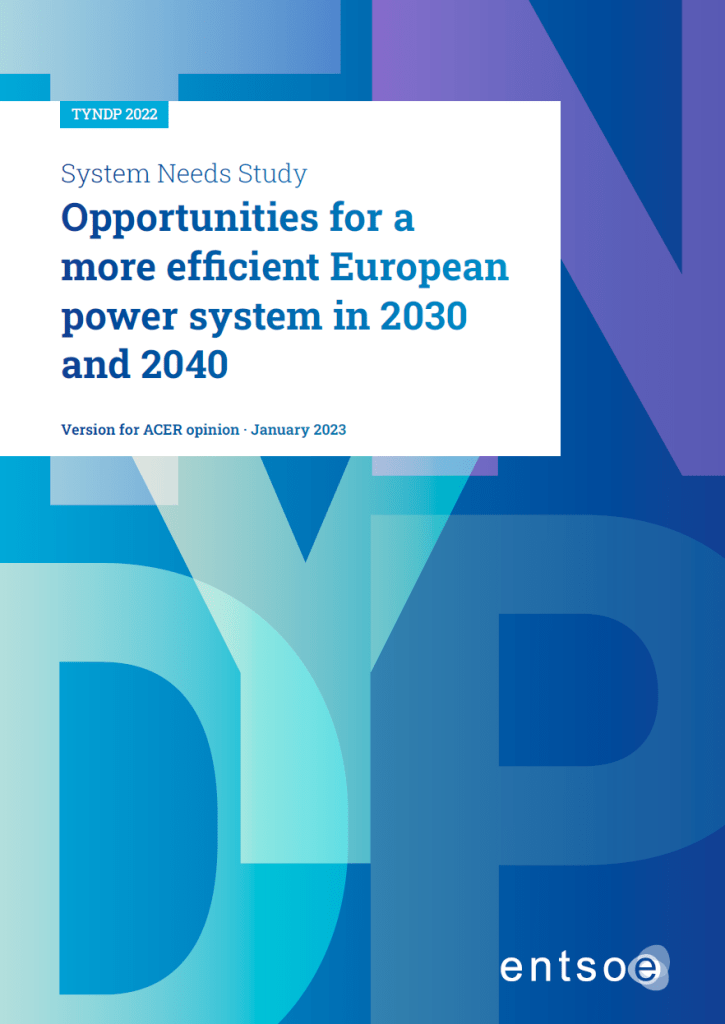
Opportunities for a more efficient European power system in 2030 and 2040
The System needs study is carried out by ENTSO-E biannually and forms part of the Ten-Year Network Development Plan (TYNDP) 2022 package. The present report investigates system needs and opportunities in the 2030 and 2040 horizons. For example: where could CO2 emissions be further reduced? Where could the curtailed electricity from renewable energy sources be used? Where are there possibilities for increased price convergence between neighbouring countries? Where would additional interconnections and other flexibilities like storage improve the system behaviour and the security of electricity supply?
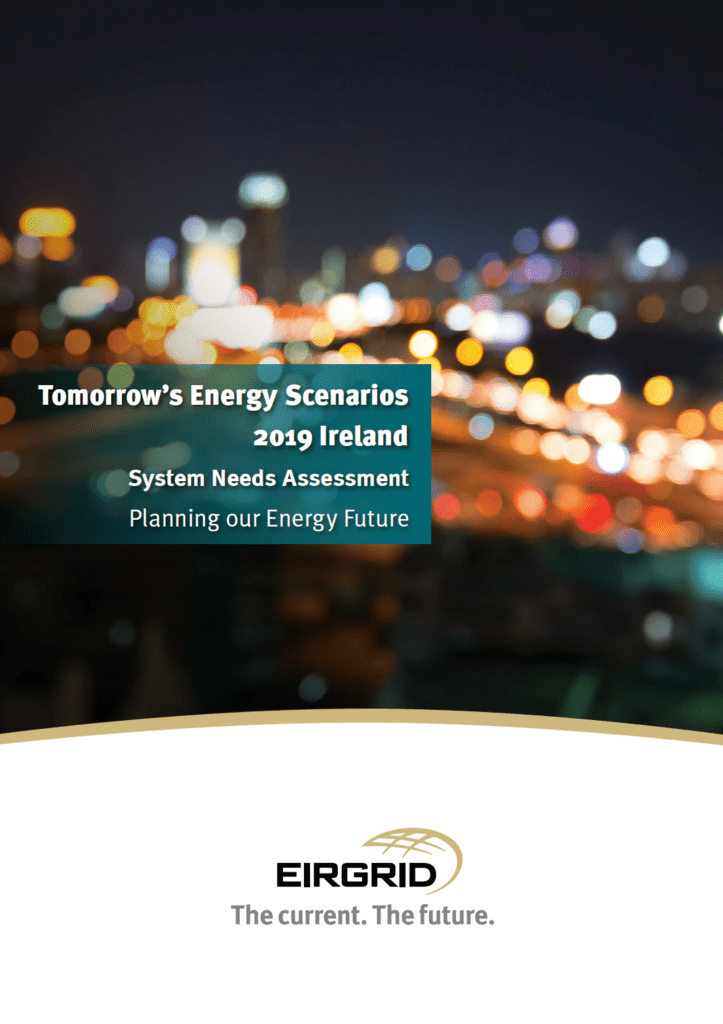
EirGrid’s Future Energy Scenarios 2019
Coordinated Action outlines the scenario where sustainability is a core part of decision making and proposes that at least two additional interconnector to Great Britain are built by 2040 in order to facilitate higher RES-E levels.
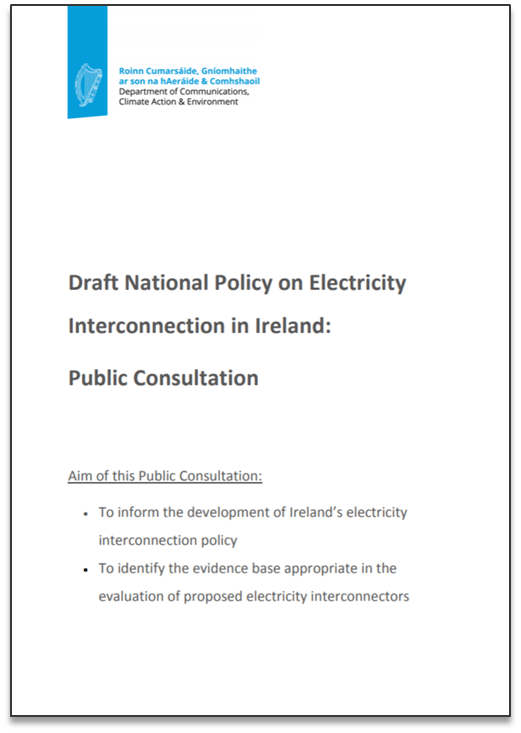
Ireland's National Policy Statement on Interconnection
MaresConnect further aligns with Ireland’s National Policy Statement on Interconnection published in 2018. Ireland’s peripheral location at the edge of mainland Europe means that it is naturally isolated from the wider European electricity grid. This fact, combined with the small size of the market, leads to risks to security of supply and reduced competition. Steps have been taken to address this isolation by building/planning interconnection infrastructure that links Ireland to larger cross border markets and brings direct benefits to Irish consumers through lower energy costs.

EU Policy on Interconnection
The European Commission Expert Group on Electricity Interconnection Targets now recommends an increased threshold target of interconnection capacity of at least 30% of installed renewable generation capacity by 2030. This is designed to ensure adequate export capacity for the continued development of renewable generation in Member States and is of particular importance for Ireland, with high wind generation capability. The November 2016 Clean Energy Package for All Europeans, still being negotiated, will likely have further impacts on electricity interconnection across Europe. In particular, some of the provisions of the three proposed Regulations and Directive relating to the internal market for electricity is expected to lead to an increasing focus on interconnection as a means to addressing security of supply considerations.

Climate Action Plan 2019
Climate disruption is already having diverse and wide ranging impacts on Ireland’s environment, society, economic and natural resources. The Climate Action Plan 2019 ‘to tackle climate breakdown’ published by the Department of Communications, Climate Action and Environment, sets out an ambitious course of action over the coming years to address this issue. The plan sets out a roadmap to 2030, which in electricity terms, primarily involves an increased reliance on renewables from 30% to 70% adding 12GW of renewable energy capacity (with peat and coal plants closing) and the utilisation of further interconnection. The MaresConnect project aligns with the plan and will deliver towards the benefits sought. Achieving 70% renewables will require Ireland to build out significant infrastructures and the capacity to integrate new technologies. This will be a significant challenge. However these changes are necessary if Irish society is to avoid having stranded fossil fuel assets as the transition accelerates in the 2030-50 period.